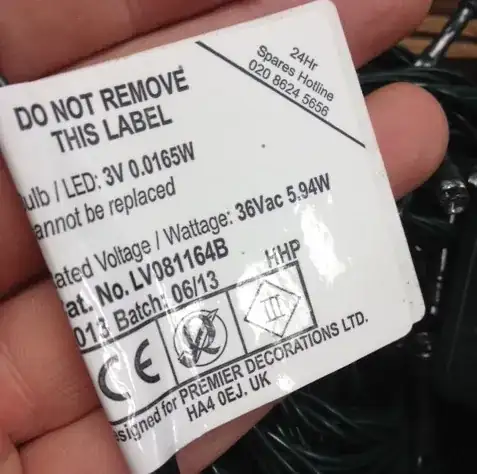So, Nosrac's answer is mostly correct in terms of how to do the calculation, but the actual results can vary quite a bit.
Personally, I bought several 100 LED strands this season for about $7 USD each. Each strand is rated at 6.5 W (which seems much more reasonable than 30+ W for an LED strand.) Where I live, power costs about 9.6 cents/kW-Hr.
With these numbers, using the same 8.56 year projected lifespan, we get these results:
Purchase Cost
$7 / 8.56 yr = $0.82 / yr
Energy Usage
6.5 W * $0.000095 / W-Hr = $0.00062 / Hr
So, for a year, that would be 365 * 24 * $0.00062 = $5.43
Total Cost of Owning and Using the Lights per Year of Operation
Given the above figures, this means that, if you ran the lights 24/7 all year, you'd have a projected total cost around $6.25 per strand per year if you used the lights I purchased and paid a power cost similar to mine.
HVAC
If you want to be extremely precise about your calculations, you need to consider the factor that Acccumulation mentioned in the question comments: heating and air conditioning. If you live in a climate that requires heating in the winter and you only use these lights inside in the winter, your marginal cost of operating the lights is actually reduced, as nearly all of the 6.5W used by the strand will end up getting dissipated as heat into your home.
This is effectively the same thing as if you were using a 6.5 W resistive heating coil. Thus, if you were using resistive heating to heat your home, you'd actually break even on the power cost of operating the lights vs. the power you'd have otherwise used from your heater. However, electric heat pumps can provide heat significantly more efficiently. If you'd normally be heating your home with an electric heat pump that moved 4 times its power consumption into your home, then the effective cost of power the LED light strand would only be reduced by a quarter rather than being eliminated entirely.
On the flip side, if you're running the lights during the summer in a climate that requires air conditioning, then you'll be spending additional electricity in your air conditioning system to remove the heat produced by the lights from your home. If you live in a temperate climate, the effects of reduced heating and increased air conditioning usage may mostly cancel each other out if you run the lights all year long.
Conclusion
Since I use an electric heat pump to heat my home during the winter, using my example numbers from above, my effective cost of operating each strand of lights within my home if I operated them only during the winter months would be:
$0.82 + (0.75 * $5.43) = $4.89 per year of operation
